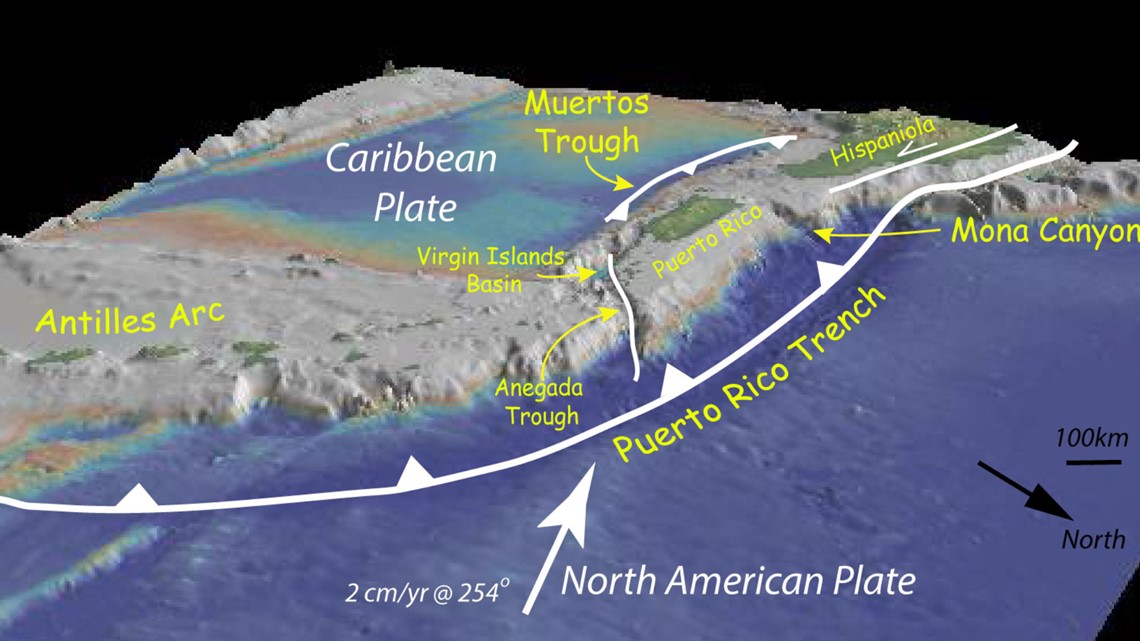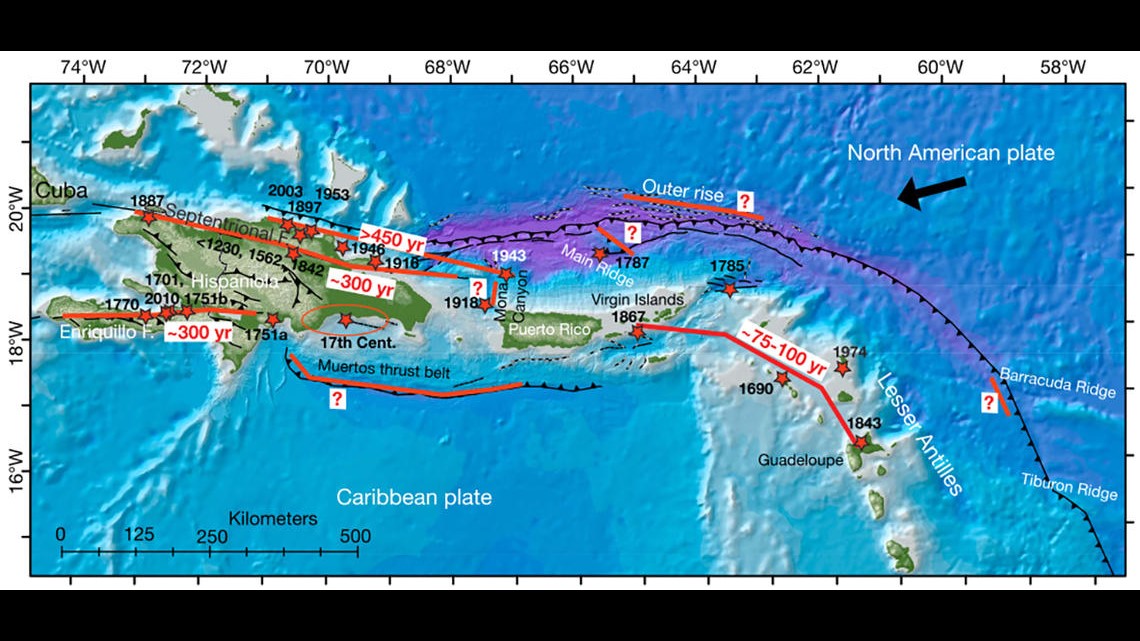WASHINGTON — Puerto Rico has felt hundreds of aftershocks after the Jan. 7 magnitude 6.4 earthquake. And throughout history, earthquakes are not an unheard-of occurrence on the island. This is because of plate tectonics.
Puerto Rico and the adjacent islands surrounding it are sitting on the convergence between two tectonic plates. The islands are on the edge of the Caribbean Plate, which extends to the south in the Caribbean Sea, while the North American Plate is just north of the island.
These two plates have been slowly pushing together over millions of years. The rate of movement of tectonic plates is roughly half the rate at which your fingernails grow. But over time, this builds up pressure. When this pressure is released at a fault, an earthquake occurs.


Puerto Rico has many faults that can be the origination point of earthquakes - from the north side of the island to the west and the south.


The earthquake series from 2020 has been on the southwest side of the island along the Muertos Trough, where the Caribbean Plate is slowly sliding underneath Puerto Rico.

